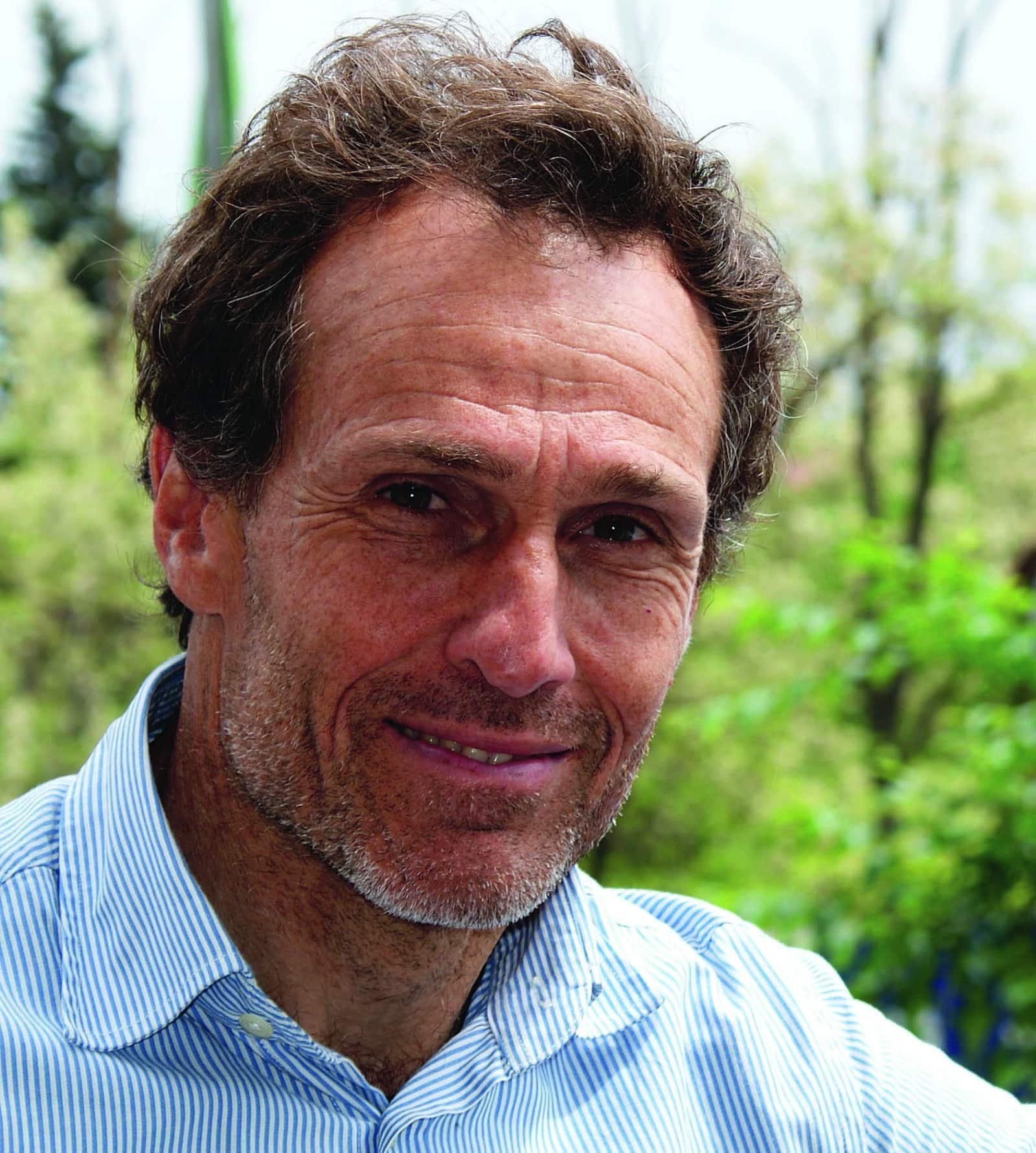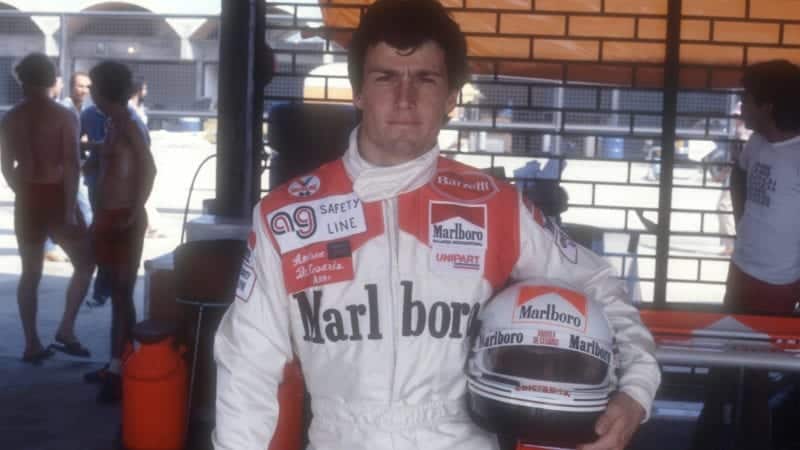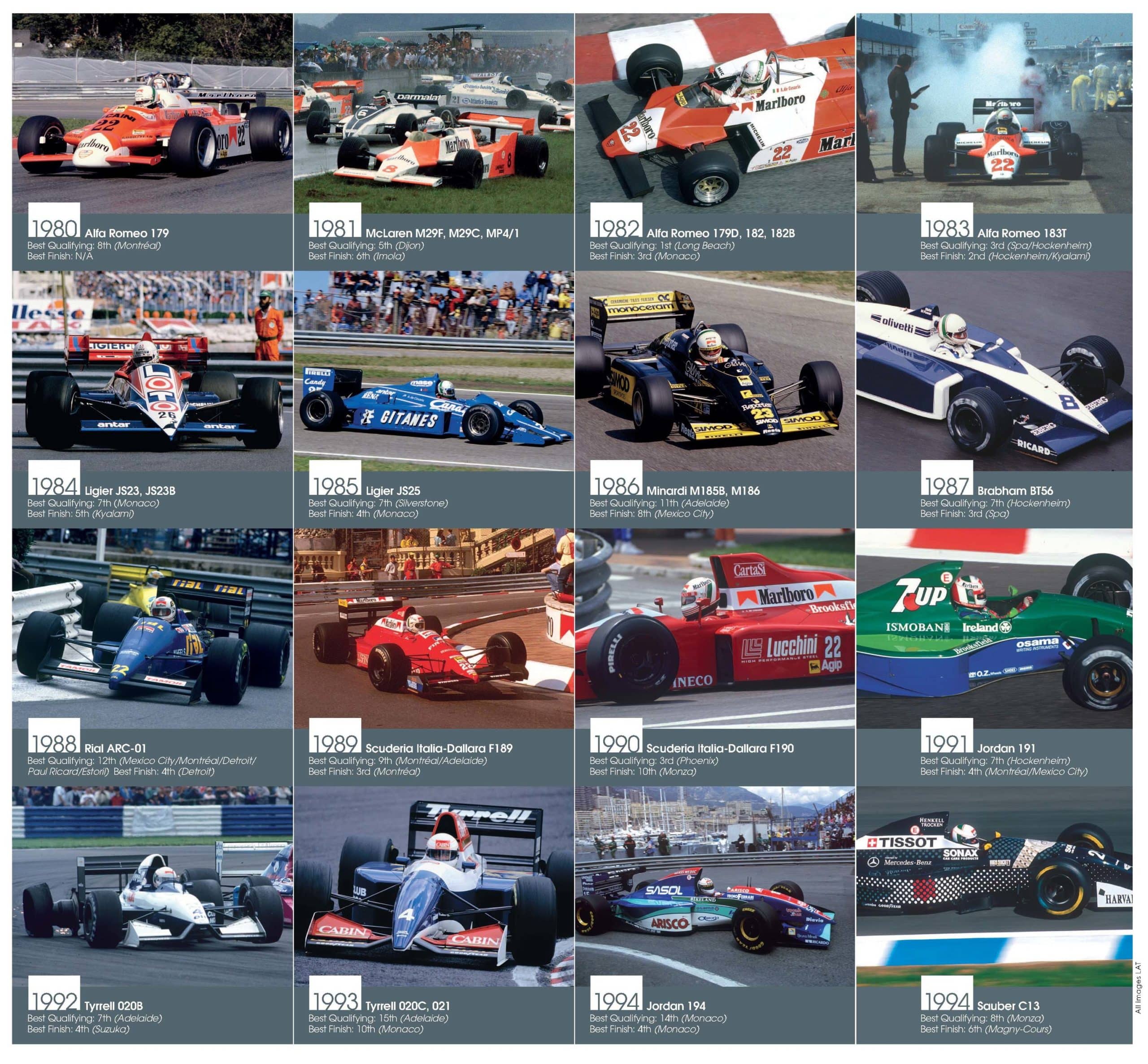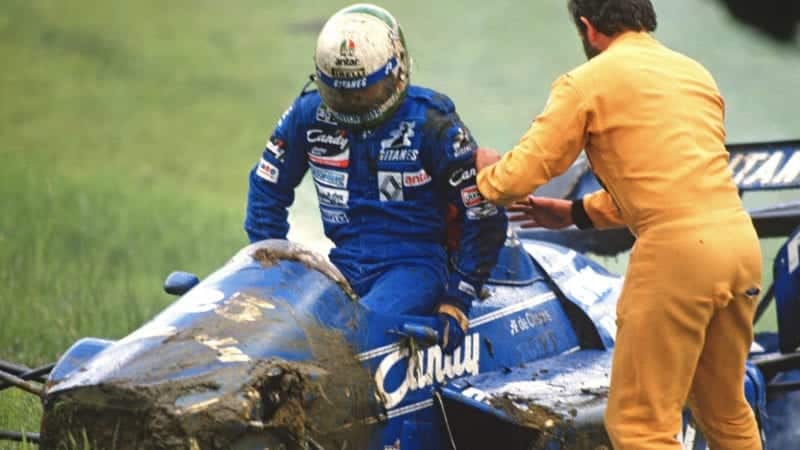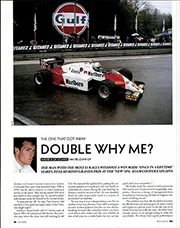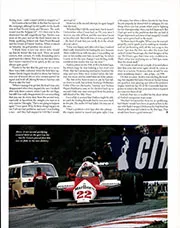From here it was on to Rial, a tiny outfit owned and run by Günther Schmid, the volatile man behind ATS wheels. There were seven employees, eight in all with designer Gustav Brunner. The car, outwardly a copy of the Ferrari, worked well enough with a reliable Cosworth V8 and a Ferrari gearbox. But there was one small problem. Too small…
“Yes, there was,” says Andrea. “When Gustav asked engine tuner Heini Mader how big the fuel tank should be, Mader told him 190 litres. But this was not enough. Many times I was running strongly but I knew I hadn’t got enough fuel to finish the race. Crazy. In Canada and Australia I ran out, even though I was cutting the revs to save fuel. But I was fourth in Detroit, without the clutch. In the end Gustav was fired, there was no money, we had no engineer and Schmid asked me to keep a logbook of the engine mileage, brakes, everything, like a company car. Then, at Monza, the steering wheel came away in my hands at the first chicane. I braked, turned in and the wheel just came off. Schmid did not believe me. I had to show him photos of me holding the wheel in the air. He was a strange guy.”
Then came the Dallara years, Andrea taking his Marlboro money to BMS Scuderia Italia. Early results were encouraging. While heading for a podium at Monaco, however, he was rudely punted off while passing backmarker Nelson Piquet’s Lotus at Loews hairpin.
“I tell you, I was so angry. He did something really bad and today he would have been disqualified. For two laps he held me up, blue flags everywhere, and at Loews I went up the inside and he turned into me. This was the one place I could do well in the Dallara. It was underpowered and after the race I asked him, ‘Why you do this to me, why?’ and he replied that he was sorry. Honestly, sorry was not good enough. He also told me he was ‘fed up with this f****** race’. He was a world champion, he was lapped, it was a dark period for him and he just didn’t care. I would have been on the podium, for sure.”
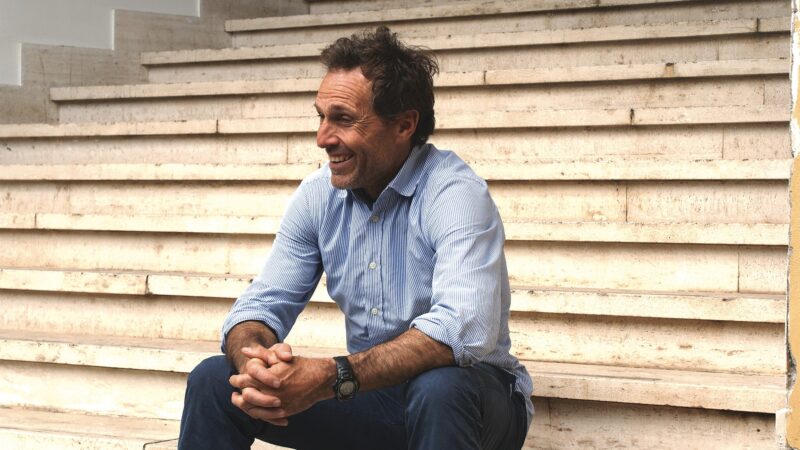
De Cesaris’ anecdotes are peppered with laughter
In Canada, towards the end of ’89, Andrea finished third behind Williams pair Thierry Boutsen and Patrese, driving a brave and skilful race in the rain. This was to be the last time de Cesaris stood on a Grand Prix podium. The following year he failed to score a single point and moved on to Jordan.
“I knew Eddie from my F3 days. He was smart, understood the way a driver’s mind works and knew how to get the best from me. If he thinks you can give him the edge, he will help you. If you’re not on the pace, he won’t even talk to you. So he was like a father to me – for him and Alfa Romeo I drove my best. I was comfortable and there was no pressure. And he knew I was good because I beat him in F3 when he was racing.
“The Jordan 191 was a good car and it was a good season, with many points, but at Silverstone the suspension broke at Bridge and I had a big crash. At Spa, you know, I could not believe what happened when the engine blew up – I was running second, not many laps to go, and suddenly…” He shrugs with frustration.
“My God, I thought, I look like an idiot next to this guy. I was side by side with a man who would win the world title seven times.”
“The oil tank was too small and I ran out. We were running a new type of piston ring that used more oil – but Ford hadn’t told us.” His team-mate that weekend, albeit briefly, was one Michael Schumacher, fresh from success in sports cars with Sauber. He joined Jordan after Bertrand Gachot was jailed following an affray with a London taxi driver.
“I was always quicker than Gachot,” de Cesaris says, “but then Schumacher arrived. In first practice at Spa he was four tenths faster than me, flat through Eau Rouge. My God, I thought, I look like an idiot next to this guy. I mean, I was side by side with a man who would win the world title seven times. At the hairpin he was three or four tenths quicker than me, for example, so I went out, went flat through Eau Rouge no problem, tried different lines at La Source, but still he qualified in front of me. In the race, of course, I went well and he was out on the first lap.”
A good season, then. He was ninth in the championship, more than he or Eddie had expected of a new team and a new car. The consensus at the time was that Andrea had driven with more of his head and less of his heart, the Anglo-Irish team exerting a calming influence. At the end of the year Jordan did a deal with Barclay and even his silver tongue could not talk its way into having two tobacco sponsors on the car. Something had to give and there were debts to be paid.
Andrea took his sponsorship down the road to Surrey, to a man who knew how to handle every type of driver. Ken Tyrrell had Ilmor V10 power for his 020, the car handled well and de Cesaris performed close to the top of his game.
